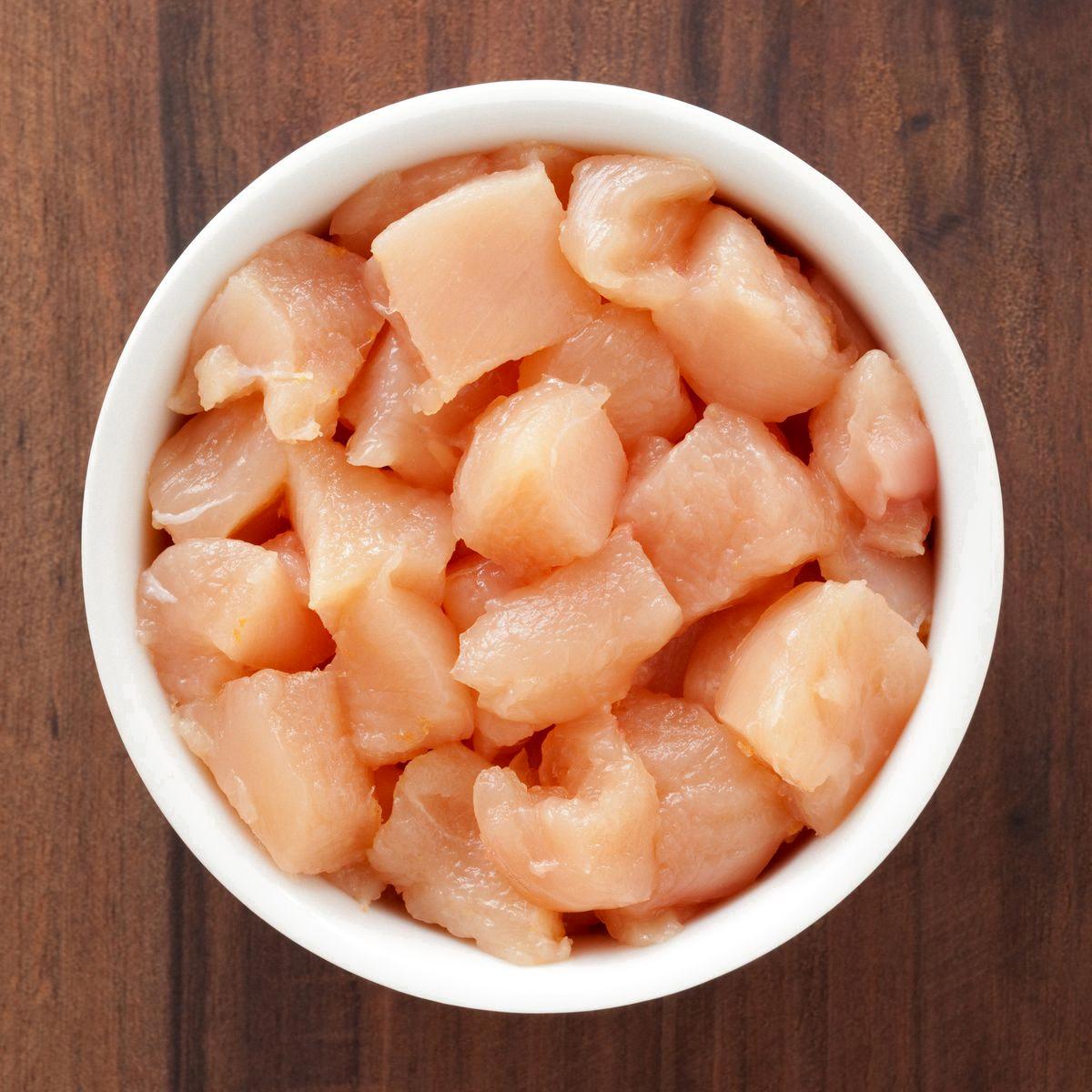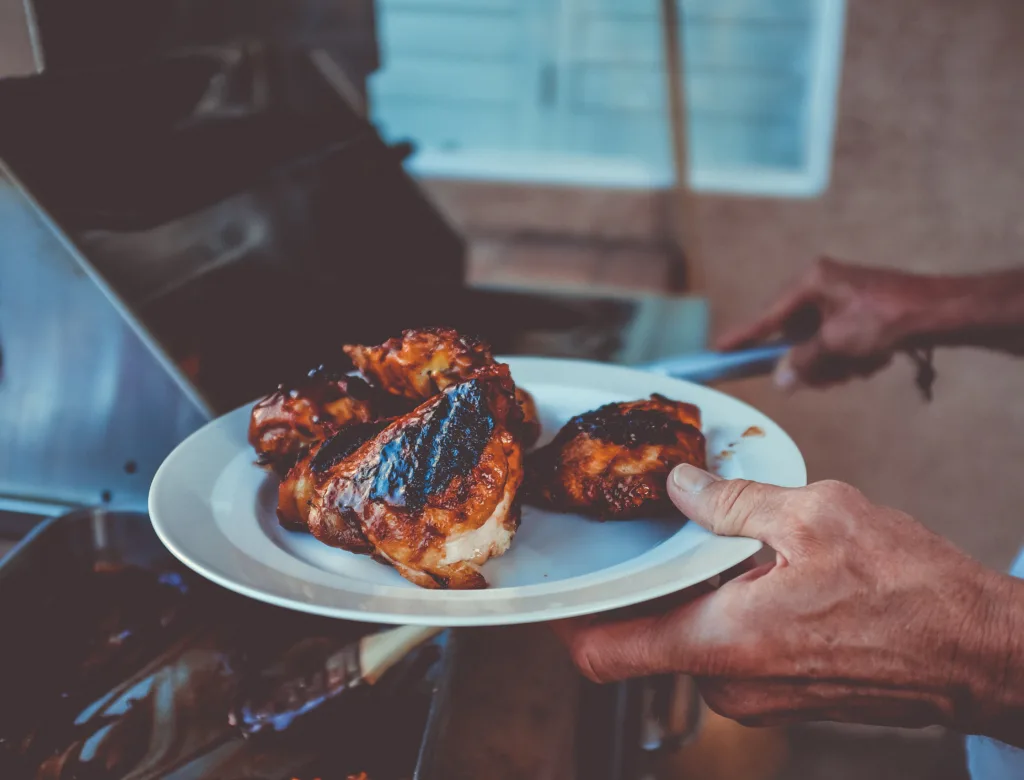Chicken is a popular and versatile protein source that can be cooked in a variety of ways. However, undercooked chicken can pose a serious health risk, as it can contain harmful bacteria such as salmonella and campylobacter. In this article, we will discuss how to tell if chicken is undercooked and the potential dangers of consuming undercooked chicken.
First and foremost, it is important to note that changes in color and texture are not reliable indicators of whether chicken is finished cooking. The only way to ensure that chicken is safe to eat is to cook it to the appropriate internal temperature. The USDA recommends cooking chicken to a minimum internal temperature of 165°F (74°C) to kill any harmful bacteria that may be present.
There are several ways to check whether your chicken is cooked to the appropriate internal temperature. One method is to use a meat thermometer to measure the temperature of the thickest part of the chicken. Insert the thermometer into the meat, making sure not to touch the bone, and wait for the reading to stabilize. If the temperature reads 165°F (74°C) or higher, the chicken is safe to eat.
Another way to check whether your chicken is cooked is to inspect the juice. Fully cooked chicken has clear juice, while the juice of undercooked meat is red or pinkish. You can also tell if chicken is undercooked by inspecting its color, taste, texture, and juice. Undercooked chicken may appear pinkish or have a rubbery texture, while fully cooked chicken should be white or brown and have a tender texture.
It is important to note that consuming undercooked chicken can lead to foodborne illness, also known as food poisoning. Symptoms of food poisoning can include nausea, vomiting, diarrhea, stomach cramps, and fever. In severe cases, food poisoning can lead to dehydration, hospitalization, and even death.
To prevent food poisoning from undercooked chicken, it is important to handle and cook chicken safely. Always wash your hands before and after handling raw chicken, and use separate cutting boards and utensils for raw chicken to avoid cross-contamination. Thoroughly cook chicken to the appropriate internal temperature, and never eat chicken that is undercooked or raw.
Undercooked chicken can pose a serious health risk and should be avoided. The only way to ensure that chicken is safe to eat is to cook it to the appropriate internal temperature of 165°F (74°C). Use a meat thermometer, inspect the juice, and check for color, texture, and taste to determine if your chicken is fully cooked. By following these guidelines and handling chicken safely, you can enjoy this popular protein source without putting your health at risk.
Risks of Eating Slightly Undercooked Chicken
Eating slightly undercooked chicken can lead to a foodborne illness or food poisoning, which is caused by harmful bacteria such as Salmonella or Campylobacter. These bacteria are commonly found in poultry, and they can cause symptoms such as diarrhea, vomiting, abdominal cramps, fever, and nausea.
When you eat undercooked chicken, the bacteria present in the meat can survive and multiply in your intestines, leading to an infection. The symptoms of food poisoning can appear within hours or days after consuming contaminated food, and they can last for several days.
It’s important to note that even if you only consume a small amount of undercooked chicken, you can still get sick. This is because the harmful bacteria can be present in any part of the chicken, including the meat, skin, and juices.
To avoid getting sick from undercooked chicken, it’s important to cook it thoroughly to an internal temperature of 165°F (74°C). You should also avoid cross-contamination by washing your hands, utensils, and surfaces that come into contact with raw chicken.
Eating slightly undercooked chicken can lead to food poisoning, which can cause unpleasant symptoms and lead to serious health complications. It’s crucial to take proper precautions when handling and cooking chicken to prevent contamination and ensure your safety.

Source: womenshealthmag.com
The Dangers of Undercooked White Chicken
When it comes to cooking chicken, relying solely on the color of the meat may not be the most reliable indicator of doneness. In fact, the color of the chicken can be misleading and may not accurately reflect the internal temperature of the meat. This means that chicken can be white and still undercooked.
According to a study by the USDA, changes in color and texture are not reliable independent indicators of whether chicken is finished cooking. This is because the cooking process of chicken can vary depending on a number of factors, such as the size of the chicken, the cooking method, and the temperature of the oven or grill.
To ensure that chicken is fully cooked and safe to eat, it is important to use a food thermometer to check the internal temperature. The USDA recommends that chicken be cooked to an internal temperature of 165°F (74°C) to ensure that any harmful bacteria or pathogens are killed.
In addition to using a food thermometer, there are oher ways to ensure that chicken is fully cooked. These include:
– Cutting into the thickest part of the chicken to check for any pink or raw-looking areas.
– Checking for clear juices – if the juices are pink or red, the chicken may not be fully cooked.
– Making sure that the chicken is firm to the touch and not mushy or slimy.
By using these methods, you can ensure that your chicken is fully cooked and safe to eat, even if it is white in color.
Is It Safe to Eat Chicken That Is Slightly Pink?
Chicken that shows a pinkish tinge in the meat and juices can sometimes be fully cooked and safe to eat, according to the United States Department of Agriculture (USDA). The key factor in determining whether chicken is safe to eat is the internal temperature, not the color. The USDA recommends that all parts of the chicken should reach a minimum internal temperature of 165°F (74°C) to ensure that any harmful bacteria are destroyed.
It is essential to use a meat thermometer to check the internal temperature of the chicken accurately. Cooking times can vary depending on the method used, such as grilling, baking, or frying. Therefore, it is important to follow cooking instructions carefully and avoid undercooking the chicken.
In addition, it is crucial to handle and store raw chicken safely to prevent contamination. Always wash your hands and surfaces thoroughly with soap and water aftr handling raw chicken, and avoid cross-contamination by keeping raw chicken separate from other foods.
A pinkish tinge in cooked chicken does not necessarily indicate that it is undercooked or unsafe to eat. The internal temperature of the chicken is the most critical factor in determining its safety. Use a meat thermometer, follow cooking instructions carefully, and handle and store raw chicken safely to ensure that your chicken is safe to eat.
Identifying Undercooked Chicken Without Cutting It
Chicken is a popular food item that is consumed by millions of people worldwide. However, undercooked chicken can be harmful and lead to foodborne illnesses such as salmonella. Therefore, it is essential to ensure that your chicken is cooked thoroughly before consuming it.
One way to check if your chicken is undercooked withut cutting it is by inspecting the color of the meat. Raw chicken has a pinkish hue, whereas cooked chicken should have a white, opaque appearance. If your chicken is still pink, it is likely undercooked.
Another way to check for undercooked chicken is to examine the texture of the meat. Undercooked chicken will have a soft and rubbery texture, whereas fully cooked chicken will be firm and springy to the touch.
You can also check the juice of the chicken to determine if it is undercooked. Fully cooked chicken should have clear juice, whereas undercooked chicken will have reddish or pinkish juice.
Lastly, you can use a meat thermometer to check the internal temperature of the chicken. The recommended internal temperature for cooked chicken is 165°F (74°C). If the temperature of your chicken is below this level, it is undercooked and needs to be cooked further.
There are several ways to determine if your chicken is undercooked without cutting it. By inspecting the color, texture, juice, and internal temperature, you can ensure that your chicken is cooked thoroughly and safe to consume.

Conclusion
It is important to properly cook chicken in order to avoid the risk of foodborne illness. While changes in color and texture may not be reliable indicators of doneness, ensuring that all parts of the chicken have reached a minimum internal temperature of 165° is the best way to ensure safety. It is also important to avoid cross-contamination by washing hands and surfaces that come into contact with raw chicken or its juices. By following these precautions, we can enjoy the delicious taste of chicken without risking our health.
